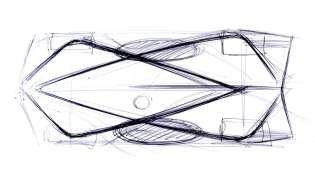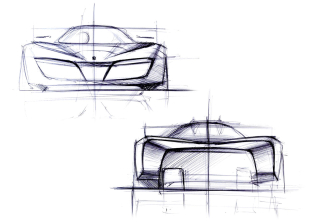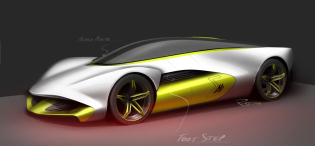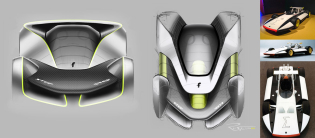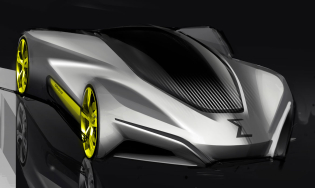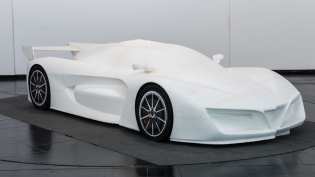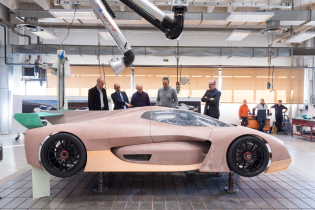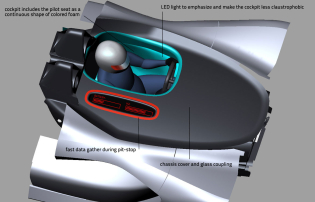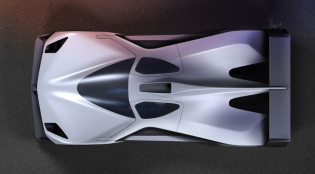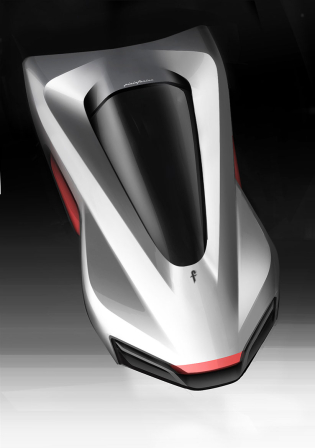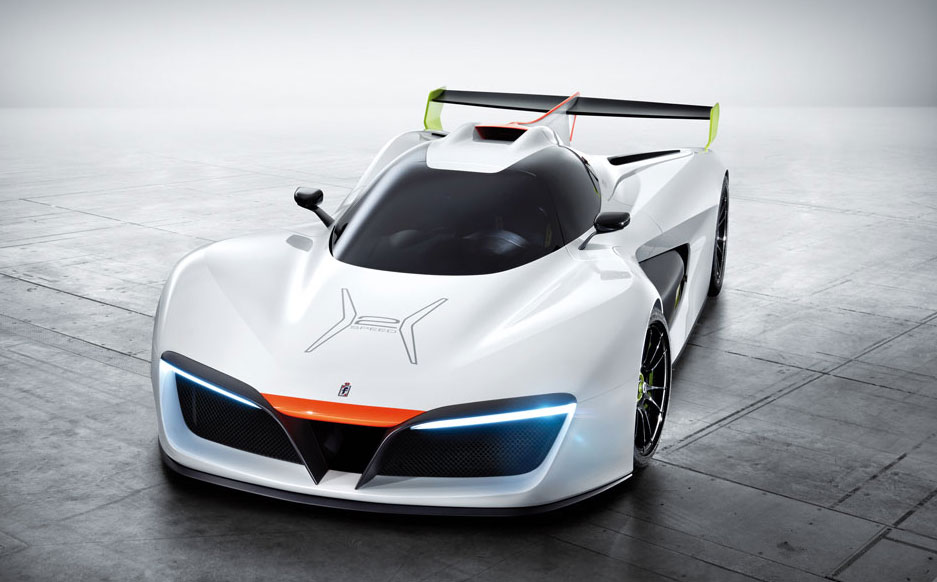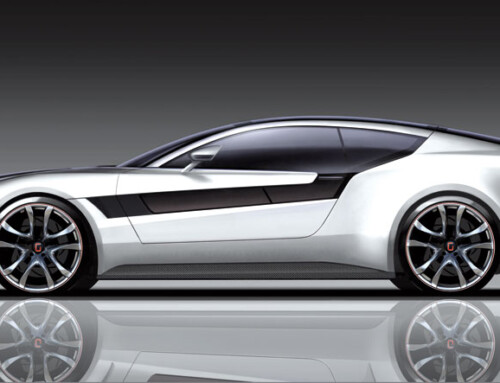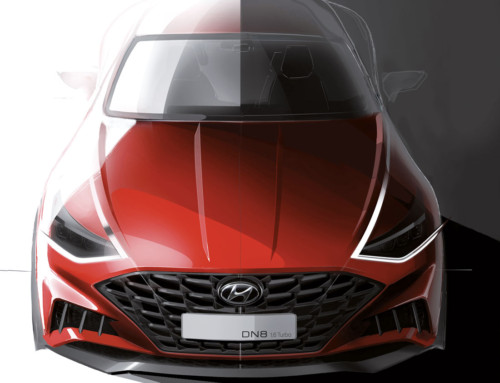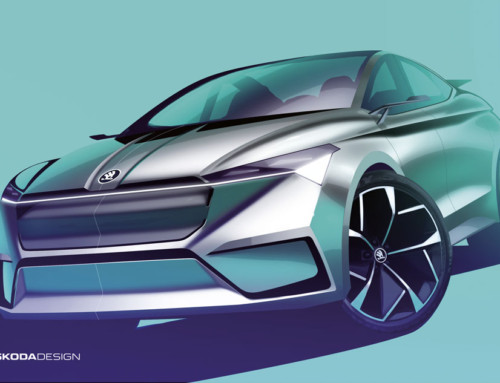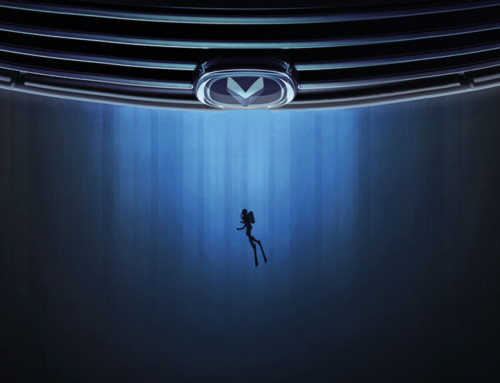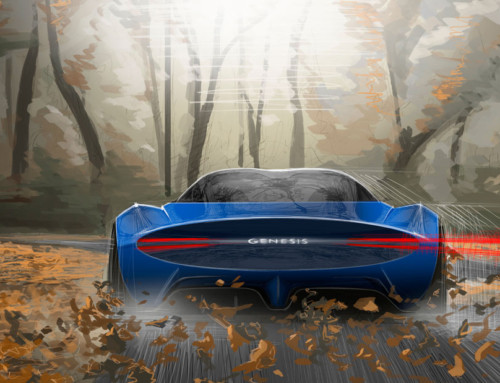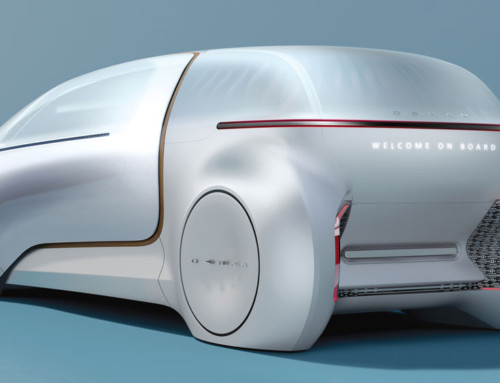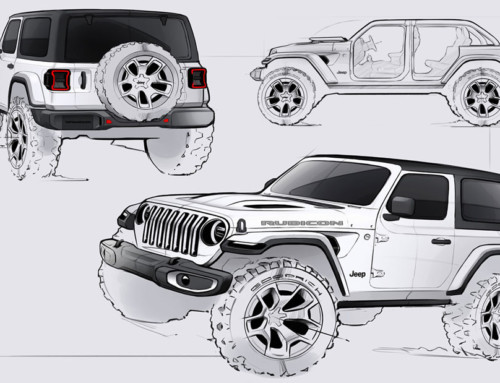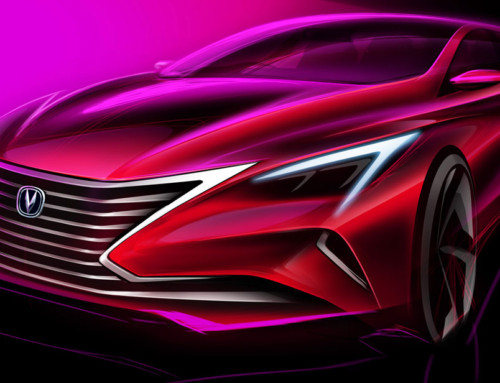Perfectly balanced softness and tension in a car shaped by a simple and effective design. The Pininfarina H2 Speed, a hydrogen fuel cell powered single seat track racer, pays subtle homage to Pininfarina’s traditions in advanced study prototypes and, in particular, to the Sigma Gran Prix of 1969, with which it shares the same intent to bring innovation to motor sports.

The references may be subtle, but they are clear: the white of the bodywork contrasting against vivid colours identifying functional zones – red for aerodynamic elements and green for safety and technology – the graphics of the H2 logo, the Swiss flag next to the Italian flag on the car’s flank (a nod to Revue Automobile Suisse, which sponsored the Sigma, and an allusion to the collaboration with the Swiss company GreenGt, which developed the technology for the H2 Speed project) and, the strongest similarity of all, the laterally positioned fuel tanks. These are two 700 bar gas tanks, each clad in a beautifully crafted fairing in high strength multi-layer carbon fibre, supplemented by another small longitudinal tank behind the driver. The total of 200 litres of hydrogen held by the tanks weighs just six kilos – translating to a negligible difference in the total weight of the car between the start and end of a race.

“This project had very limited scope for freedom, due to the choice to base the car on an FIA homologated monocoque carbon fibre LMP2 Le Mans chassis, and the limitations imposed by the hydrogen tanks” explains Pininfarina Chief Creative Officer Fabio Filippini. “Even before we started to imagine the shape of the car, we put a lot of work into defining the volumes and masses, and on the location of the tanks. We began with the overall architecture and then defined a dynamic silhouette that accentuates the technical aspects without being dominated by technology, drawing attention to them and making use of them instead from a creative standpoint”, continues Filippini.

“We defined a configuration with a perfect 49% front, 51% rear weight distribution, giving the car an autonomy of 40 minutes on the track, with three minutes for refuelling” says Pininfarina design vice director Fabrizio Valentini.

Once the top-down outline was defined, described by two opposing triangular forms converging at the centre of the car, the design process began in earnest, in a concerted effort between the designers, CAS modellers and engineers. The project progressed very quickly, with a flurry of digital modelling, three virtual wind tunnel sessions (using calibration data from the real wind tunnel owned by Pininfarina since 1972) and two examples milled from polystyrene to assess minor final adjustments, followed by the fabrication of the prototype.

“The H2 Speed has the genes to become a real car with only minimal modification, and we are currently working on the idea of a limited edition. We’re thinking of enthusiasts, companies that could use the car as a test lab and – why not? – even new racing classes. Formula E didn’t exist ten years ago, and now it’s very successful. The same thing could even happen with hydrogen cars”, concludes Fabio Filippini.
Full article in Auto&Design no. 218

